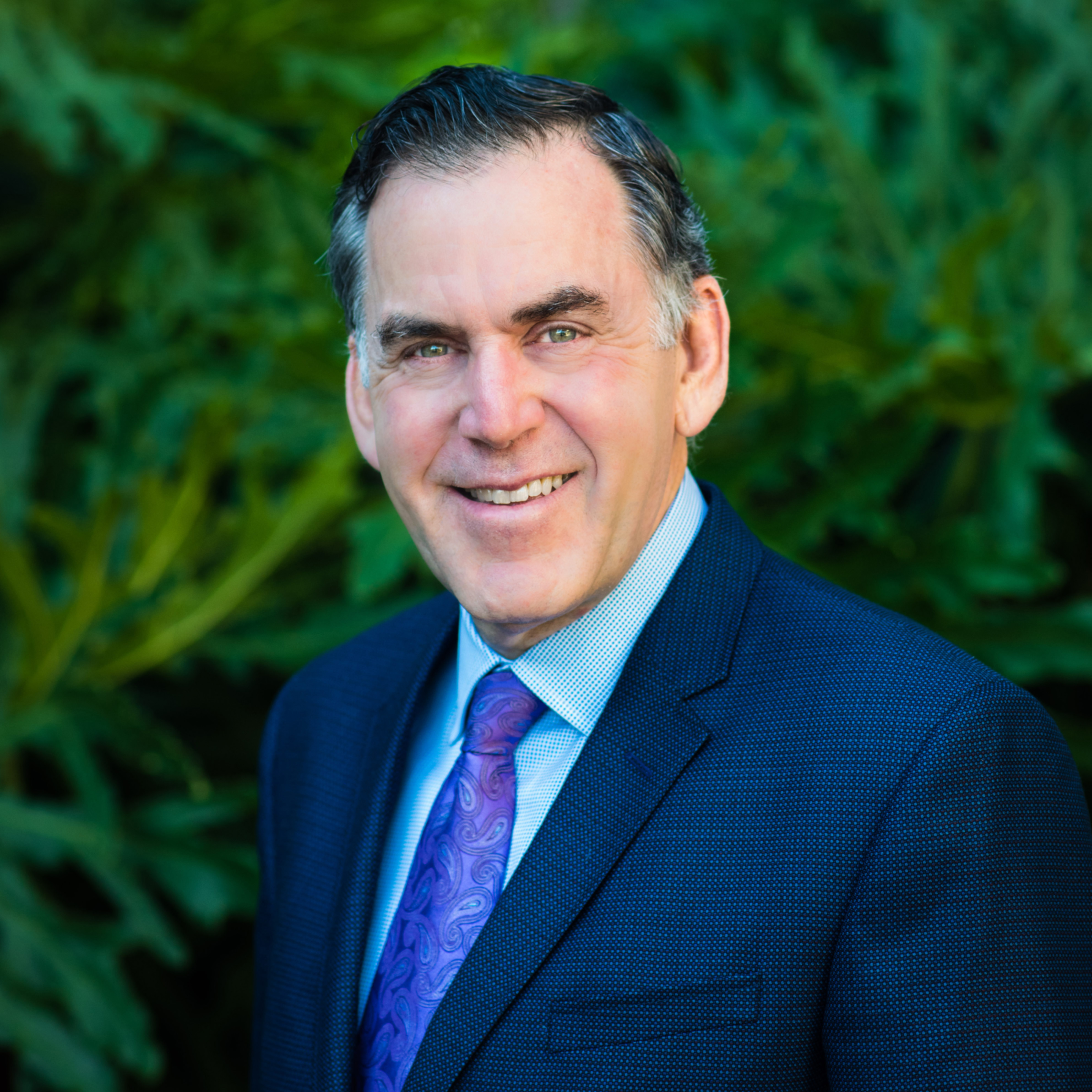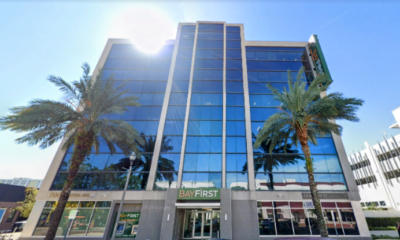Thrive
Tampa Bay Partnership CEO talks tackling the regional talent pipeline

The Tampa Bay Partnership went through a dramatic rebirth in 2016. Previously a public-private regional economic development organization, president and CEO Rick Homans says the Partnership began to recognize its waning influence among thriving economic development organizations throughout the Tampa Bay region. The Partnership voted to dissolve itself and stand up something new – an regional advocacy organization fueled entirely by private money.
Its purpose, Homans described in the St. Pete X podcast, is to tackle the thorniest of thorny issues, those that can only be managed at a regional scale. “We’re the 18th largest [metropolitan area] in the country, but we often operate like a bunch of medium sized cities or medium sized counties. And in many cases, we find ourselves competing with each other, arguing with each other.
“I’ve seen numerous communities from Tampa Bay follow each other into rooms to pitch the officials for something,” Homans said. “Where we just have a so much better chance of being successful if we all went in together for one meeting and said, ‘Here are the three things that we want.’ And we’d probably walk out with them if we did that.”
 Some of those major advocacy issues, like transportation, were obvious to the Partnership from the start. Others required a deep dive into regional data. The Partnership commissioned a massive data overhaul in 2017 and published its first Regional Competitiveness Report in November 2017. The report compared the Tampa Bay MSA (Tampa – St. Pete – Clearwater) to 19 other regions, including Minneapolis-St. Paul, Orlando, Raleigh-Durham, Seattle, Houston, and others.
Some of those major advocacy issues, like transportation, were obvious to the Partnership from the start. Others required a deep dive into regional data. The Partnership commissioned a massive data overhaul in 2017 and published its first Regional Competitiveness Report in November 2017. The report compared the Tampa Bay MSA (Tampa – St. Pete – Clearwater) to 19 other regions, including Minneapolis-St. Paul, Orlando, Raleigh-Durham, Seattle, Houston, and others.
There was good news – as the 18th largest metropolitan area in the country, Tampa Bay ranked #2 in job growth rate.
But the study also set off major alarm bells in the areas of average wage (Tampa Bay ranked 19 out of 20), median household income (20 out of 20), transportation (20 out of 20) and high school graduation (18 out of 20).
The alarms didn’t stop there.
“The real wakeup call for us was as we looked at the talent indicators and we looked at the level of educational attainment in our population,” said Homans.
 “An example would be for the 25 years and older, the percentage of the population that has a bachelor’s degree or higher, I think we’re around 27, 28 percent,” he continued. “Well, the communities that have the highest gross regional product per capita, the highest average wages, are coming in in the neighborhood of 40 to 50 percent.”
“An example would be for the 25 years and older, the percentage of the population that has a bachelor’s degree or higher, I think we’re around 27, 28 percent,” he continued. “Well, the communities that have the highest gross regional product per capita, the highest average wages, are coming in in the neighborhood of 40 to 50 percent.”
This more-than 20 point spread in educational attainment pointed to major concerns for Tampa Bay’s talent pool. Despite the abundance of colleges and universities in the area, the attainment figures for those who call Tampa Bay home are lagging in comparison to similar regions.
 Another indicator, bachelor’s degree attainment combined with the target age (millennials 24-34) proved concerning too, as it is a predictive indicator of the economic prosperity and growth of an area. Tampa Bay ranked 19 out of 20 regions, with just 28 percent of 25-34 year olds with a bachelor’s degree or higher. The top region, Raleigh-Durham, came in at 51.7 percent.
Another indicator, bachelor’s degree attainment combined with the target age (millennials 24-34) proved concerning too, as it is a predictive indicator of the economic prosperity and growth of an area. Tampa Bay ranked 19 out of 20 regions, with just 28 percent of 25-34 year olds with a bachelor’s degree or higher. The top region, Raleigh-Durham, came in at 51.7 percent.
These finding prompted a shift in attention toward talent pipeline (or lack thereof) in Tampa Bay. Despite small-scale efforts to boost talent pipeline, from companies like TechData working with the University of South Florida, St. Petersburg’s Ex-Labs program, as outlined in the Catalyst #AgileEducation series, to see serious changes in indicators throughout the region, the culture of multiple sectors must shift.
The Tampa Bay Partnership is taking on that challenge. It kicked off a research phase to hone in on successful national models, thanks to a two-year $300,000 grant from JPMorgan & Chase.
“We’re actually now embarking on a multi-year effort,” Homans explained, “and we’re focused on what’s called an employer-led demand driven workforce strategy.
“Rather than kind of pushing the supply of labor and degrees forward, looking at it from the other side where you’re understanding what the demand is in the market for specific degrees and education and certificates,” said Homans. “And then you’re … viewing it almost as a supply chain issue.”
This approach is not original. In fact, the Partnership is following a model from the U.S. Chamber called Talent Pipeline Management, and cities around the country have already implemented the strategy.
In June 2018, the Tampa Bay Partnership brought a group of 15 Tampa Bay leaders in business, nonprofit and education to Houston to study what Talent Pipeline Management has looked like in Texas, and how lessons that Houston learned from their UpSkill program can be applied locally.

Ex-Labs with instructor Pat Gehant, at USFSP’s Kate Tiedemann College of Business. Photo provided by Kate Tiedemann College of Business
UpSkill is Houston’s industry-led collaboration that works with local stakeholders to “strategically expand the talent pipeline and attract talent to high-demand careers in the industry sectors considered the drivers of the region’s economy.”
UpSkill has utilized the U.S. Chamber Talent Pipeline Management approach in booming sectors like the healthcare, construction and petrochemical industries, to connect employers with long-term talent pipeline needs with educational institutions. They found serious gaps.
For Houston to remain competitive in some sectors, the region needed more skilled workers with higher educational attainment than a high school diploma, but less than a bachelor’s degree. In the healthcare sector, Houston was experiencing a shortage of nurses with four-year degrees, while local colleges and universities were churning out nurses with two-year degrees. Lack of communication was hindering forward progress and economic growth, until UpSkill brought the right players around the table.
Tampa Bay is likely facing those same challenges, but they have yet to be identified. Finding the target industries that propel the Tampa Bay economy, or have the potential to, given the right labor pipeline, is the essential first step.
“Being able to have much more clarity from the business side to the community colleges to the public-school system to the four-year universities of exactly what’s needed for our businesses here to prosper,” said Homans, “to be able to hire the right kind of people to grow.”
“We’re in the process now of identifying the first employer collaborative that would represent either a specific industry or a cross industry function,” explained Homans in the SPx podcast recorded in late July.
“You know, like finance or H.R. or technology, and to focus on that first one and get it up and running really well with the aligned supply chain and then be able to replicate it for the next one, the next one, the next one.”
The Tampa Bay Partnership was set to conclude the research phase in October and set a strategy through the end of 2018. Implementation should begin in early 2019.
Once implementation starts, successes will lead to replication in other industries and cross-industry skills. “It will provide very specific results that we’ll be able to track. We’ll have a dashboard. We’ll be able to track the talent pipeline and how it’s performing for this specific industry. And then we’ll be able to replicate that.”
It all comes back to shared, transparent and accessible data, says Homans. “That’s an example of using the data that we learned from this report, convening leadership and moving forward with a specific action plan that will deliver results.”







